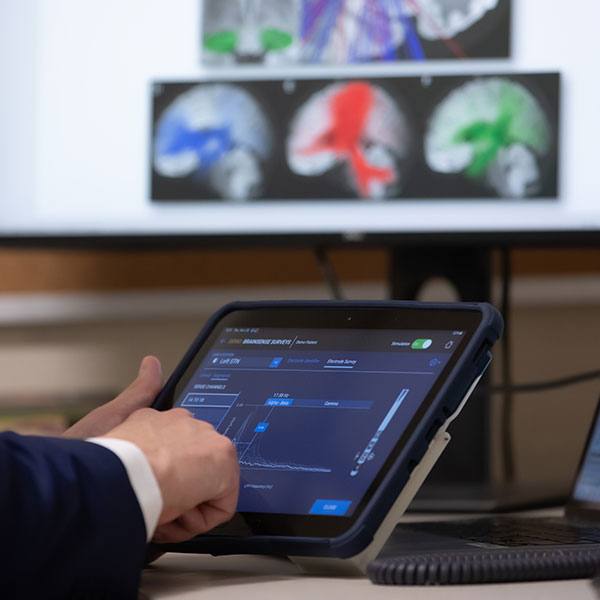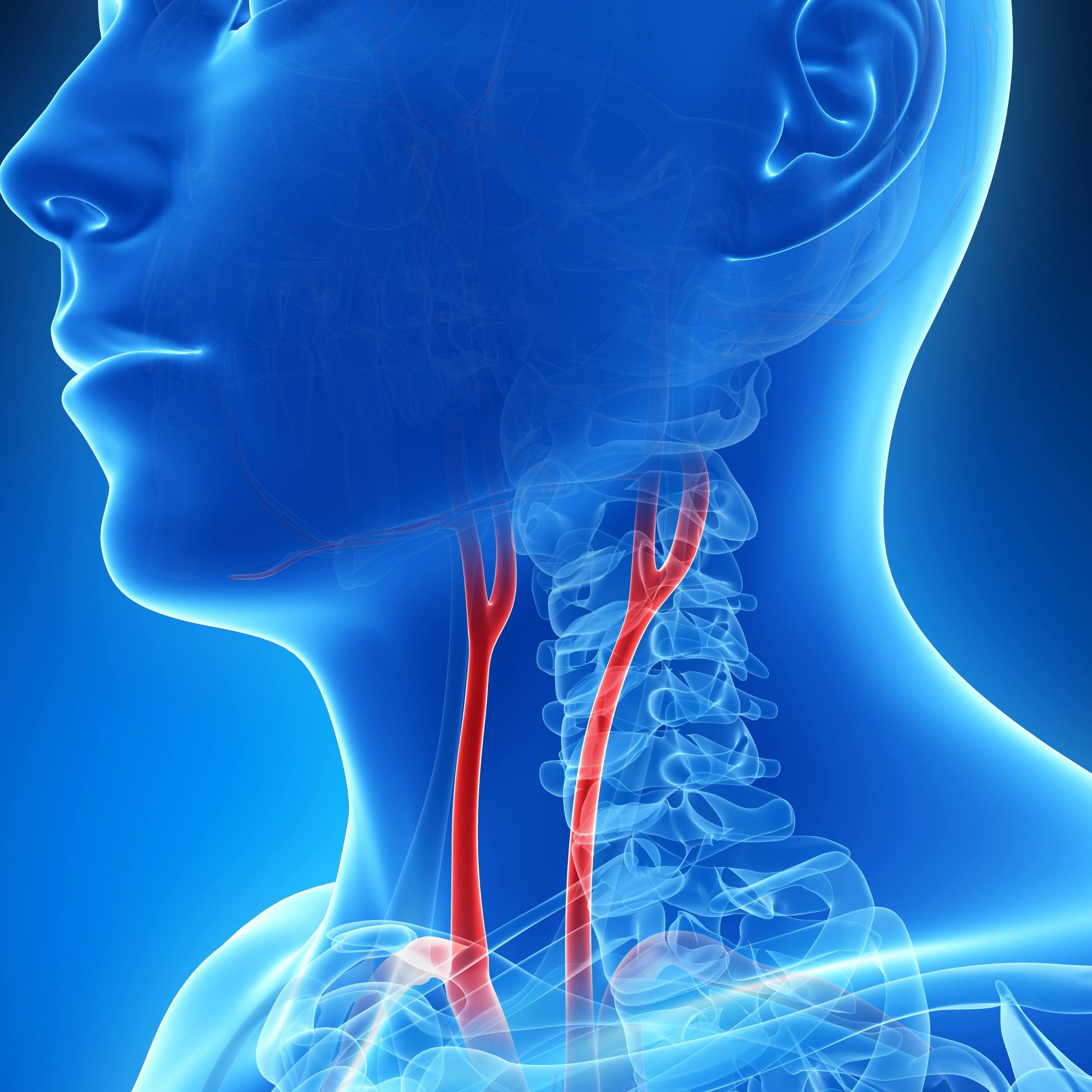-
Bridge the Gap
The last leg of the journey from discovery to patient care may be the most difficult: traversing the commercialization gap. Unless a treatment or technology can reach medical practice, years of research may be meaningless.
Kidney disease patients on dialysis frequently lose the ability to make hemoglobin, the iron-rich protein in blood that carries oxygen. They may experience anemia, and feel run down and out of breath.
The standard treatment: Doses of the hormone erythropoietin (EPO) to stimulate bone marrow to produce red blood cells, which contain hemoglobin. A red blood cell can survive for 100 days after it's produced, so repeated administration of EPO can lead to the opposite problem — excessive red blood cells. As a result, patients often end up with too much hemoglobin, which increases the chances of heart attack or stroke.
In response, doctors throttle back on EPO. This often causes patients to become anemic again before the doctors find the correct dose. This roller-coaster effect, called hemoglobin cycling, can lead to organ dysfunction or injury, and puts the patient at a greater risk of hospitalization, and even death.
Now, a team of Mayo Clinic doctors and outside business consultants have developed a software program with an algorithm that predicts the effect of EPO in each patient and refines these predictions based on cumulative results to reduce the possibility of hemoglobin cycling.
"We were able to reduce our usage of the drug by almost 50 percent," says nephrologist James T. McCarthy, M.D., of Mayo Clinic's campus in Rochester, Minnesota, who helped develop the technology. "And we found that we could get approximately 80 percent of our dialysis patients using EPO in the desired hemoglobin range at all times."

Before the development of the software, only 45 percent of dialysis patients were managed within the proper hemoglobin range.
The software has won U.S. Food and Drug Administration (FDA) approval and has been licensed by the start-up Physician Software Systems, which is offering it for sale to hospitals and clinics throughout the country. According to Dr. McCarthy, the impact on patient care and savings to the health care system could be huge.
"If this particular approach were adopted throughout the U.S.A., we could see the bill for this drug, which is used in most dialysis facilities, drop nationally by $1 billion to $2 billion," Dr. McCarthy says. "It took the right convergence of skill sets — the hematology experts who know how blood is made, the system dynamics experts who know how to manage a complex system, and those of us who know where we want it to end up."
The role of Mayo Clinic Ventures
The software to reduce hemoglobin cycling is just one example of many Mayo Clinic inventions — new treatments, new devices, new procedures — that can improve patient care.
The challenge is finding ways to get these innovations beyond Mayo Clinic's walls and into other health care institutions around the world.
That's the job of Mayo Clinic Ventures, which oversees the licensing of Mayo Clinic technologies and invests in startups. It serves as a bridge between discoveries and the marketplace, bringing research to patients.
"From a patient's standpoint you want to know that you're getting the best care," says

James A. Rogers III, chair of Mayo Clinic Ventures. "And Mayo excels at giving you the best care. Part of that is, do you have the most up-to-date, the best, the cutting-edge technologies to help with whatever problem I have as a patient. We're facilitators who take great ideas and get them to the bedside quickly and efficiently."
At Mayo Clinic Ventures, a team of experts in technology licensing and business development works closely with Mayo Clinic physicians and scientists to mine inventions, ideas and discoveries. Mayo Clinic Ventures commercializes technology that benefits patients around the world while also generating revenue to support clinical practice, research and education.
International collaboration
The path to commercialization isn't always easy or obvious, though. Sometimes, novel and potentially valuable medical ideas face barriers that must be overcome by equally ingenious methods to bring the product to the public.
That's exactly the kind of expertise offered by Mayo Clinic Ventures, where, Rogers says, a motivated and skilled business team is as important as the technology itself, and sometimes a bit of luck.
The so-called Ireland deal is a case in point.
Several years ago, Mayo Clinic gastroenterologist Vijay P. Singh, M.B.B.S., was a fellow at Mayo Clinic in Rochester. He was studying pancreatitis, a debilitating disease in which the pancreas inflames and gradually dies bit by bit, causing "pain that is like a knife going from the front to the back of your belly," Dr. Singh says. There's no effective treatment, he adds, "except to give painkillers, fluids and the encouraging suggestion, 'hopefully you'll get better.'"

Dr. Singh was examining tissue samples one day when he was called to see a patient. "I put my samples on ice," Dr. Singh says. "That's what you have to do. You hold your reactions for an hour or two." His patient was due for a pancreas debridement — slicing away the dead tissue.
"I thought of my patient and also of my samples and I thought, why not put ice on the pancreas to slow it down, like I'm doing with my samples?" he recalls.
Dr. Singh took the patient-inspired idea back to the laboratory, where, using lab rats, he developed a method to induce localized hypothermia. The stomach overlies most of the pancreas. By inserting a balloon into the stomach and circulating cool water through it, Dr. Singh could easily cool the pancreas by about 10 degrees Celsius.
In humans, Dr. Singh predicts, the cooling will have a synergistic affect, slowing each of the reactions that would otherwise lead to a cascade of severe pancreatitis, and "thereby reduce hospital stays, reduce going to the ICU, and prevent mortality. That's the benefit to the patient. And also to the health care system, because the cost of acute pancreatitis in the United States is about $2 billion."
But then came a hurdle: Bridging the gap from lab animals to approval for human use is difficult and expensive in the United States.
"There is not enough money for translational research like that," says Manu Nair, a senior technology licensing manager at Mayo Clinic Ventures who is guiding commercialization of Dr. Singh's device. "We call it the valley of death. That's where the good, cool technologies die because they don't have the money to advance them. You need to build a bridge between the early-stage basic research to a stage where venture capitalists or commercial enterprises will be interested in taking it on and running with it."
So Nair set out to find funding to back Dr. Singh's device, turning, perhaps surprisingly, to Ireland.
With its small population and university system, Ireland can't compete with countries like the United States on basic research. But Ireland can devote considerable money to applied technology.
Nair assembled a deal that bridges the valley of death, bringing together Mayo Clinic, the National University of Ireland, Galway, and Enterprise Ireland, the Irish state agency responsible for the development of Irish business.
If Dr. Singh's device is approved for human use in Europe, two venture capitalists have committed to creating a spinoff company, Nair says, and they will "then go into the European market to sell it and then bring it back into the United States for FDA approval."
Bringing a new technology to market
Once a technology wins government approval, there are generally two ways to bring it to market.
One of those ways is by launching a new start-up company specifically to commercialize the technology. Sometimes, physicians who develop a technology choose to create the new start-up business themselves through Mayo Clinic's Employee Entrepreneurial Program. Others may turn to Mayo Clinic Ventures, which works with experienced entrepreneurs, often through its Entrepreneurs-in-Residence Program.
"Their upside is getting equity in that company," Rogers says. "If that company is successful, Mayo wins and they win."
The other way to bring a technology to market is by having Mayo Clinic commercialize it through an existing company. In return Mayo Clinic negotiates for royalties on sales.
Elastography technology goes international
That was the case with a novel elastography technology developed by the Ultrasound Imaging Laboratory of James F. Greenleaf, Ph.D., to diagnose changes in soft tissue.
Ultrasound, an oscillating sound pressure wave with frequencies generally far above dog-whistle range, is used to image tissues, such as a developing fetus. But ultrasound can also generate a shear wave in tissue.

"Tissue moves and then releases," explains Dr. Greenleaf, a Mayo Clinic biomedical engineer at the Rochester campus. "That is like throwing a rock in a pond and causing a wave to propagate out away from where we pushed it."
Dr. Greenleaf and his colleagues have developed a combination of software, hardware and a procedure that allows them to measure the speed that different frequencies propagate through tissue.
"In order to analyze those shear waves, you have to do some fancy filtering and signal processing," Dr. Greenleaf says. The result is a visual image of differences in tissue stiffness and viscosity. That helps doctors diagnose and characterize the progression of various diseases.
"One of the huge potentials is in liver," Dr. Greenleaf says. With hepatitis, for example, the liver gets stiffer and stiffer. If the liver is very stiff, there are few treatment options. But at lower levels of stiffness, treatment is possible. Ultrasound provides much more information than a needle biopsy.
"The advantage of the ultrasound method is that it samples a lot of the liver, whereas if you stick a needle in, you get about 1/20,000 of the liver," Dr. Greenleaf explains.
Ultrasound elastography is also proving useful in examining breast and thyroid conditions.
Different facets of Mayo Clinic's elastography have been licensed to two well-known multinational corporations. Such agreements mean money for Mayo Clinic, of course, but they also help patients who may never step foot on a clinic campus.
"Every day, Mayo ideas are out there benefitting millions of people through companies like GE, Siemens, Medtronic and DePuy," Rogers says. "I think there's a ton of benefit to society."
-- Greg Breining
September 2015
Related Articles







